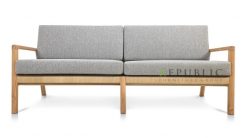Every 2nd in October, since 2009, Indonesia has commemorated it as National Batik Day. This commemoration was decided since Unesco declared batik as a Humanitarian Heritage for Oral and Intangible Culture (Masterpieces of the Oral and Intangible Heritage of Humanity).
In various literature records, it is known that batik comes from two words in Javanese, namely amba and dots. Amba means cloth and dot which refers to the way to give a motif to the cloth. Batik is also interpreted as dots drawn on cloth, then connected to form various certain patterns.
The art of drawing has been known since the days of the Majapahit kingdom. Over time, the use of batik began to spread to several kingdoms. Initially, batik was described as quite exclusive because it was only made and used in the royal environment, for example by the king, his family, and his followers.
However, due to the large number of royal followers who lived outside the palace, finally making batik was no longer only produced within the kingdom, but also in various places outside the palace although it was still reserved for people in the royal environment. However, this process turned out to be what made batik closer to the knowledge and experience of ordinary people at that time which ultimately affected the collapse of the barriers of royal exclusivity over batik.
Batik is just one of the many types of products produced from the art of drawing that developed in Indonesia. Another type is the Sengkang silk fabric. As the name implies, this silk thread uses silkworms as the main raw material. Sengkang itself is one of the districts in South Sulawesi Province which is a center for making silk fabrics. One example of a motif that is often drawn on silk is the bombang (wave) motif.
Another beautiful art of drawing can be found in songket. Songket is said to have been taken from the Malay language, namely sungkit which if translated into Indonesian is to gouge or hook. The Malay community is known as the first to introduce this songket cloth. In Indonesia, ethnic Malays are scattered in many places, such as West Sumatra, South Sumatra, Aceh, to Lombok. The word sungkit in Malay also describes the manufacturing process, namely by hooking or twisting threads.
In addition to the variety of fabrics above, there are also many other types. Among them are gringsing cloth from Bali, ulos cloth by the Batak community, sasirangan cloth by the banjar community, tapis cloth from Lampung, doyo ulap cloth from East Kalimantan, and others. This variety of cloth is actually not just a patterned piece of cloth, but it is the art of drawing that contains the knowledge and experience of the Indonesian people more beautifully.
–sh





